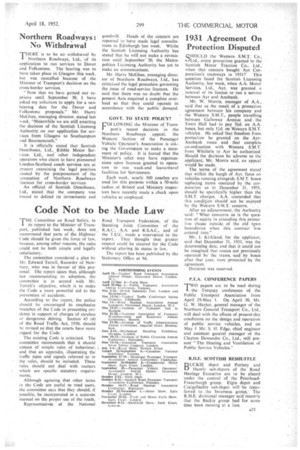Code Not to be Made Law
Page 25

If you've noticed an error in this article please click here to report it so we can fix it.
THE Committee on Road Safety, in its report to the Minister of Transport, published last week, does not, recommend that parts of the Highway Code should be given the force of law, because, among other reasons, the rules could not be both simple and legally satisfactory.
The committee considered a plan by Mr. Edward Terrell, Recorder of Newbury, who was in favour of this proposal. The report slates that, although not recommending its adoption, the committee is in accord with Mr. Terrell's objective, which is to make the Code a more powerful aid to the prevention of accidents.
According to the report, the police should be encouraged to emphasize breaches of the Code in presenting evidence in support of charges of careless or dangerous driving. Section 45 (4) of the Road Traffic Act, 1930, should he revised so that the courts have more regard for the Code.
The existing Code is criticized. The committee recommends that it should consist of simple rules of behaviour, and that an appendix, illustrating the traffic signs and signals referred to in the rules, should be included. These rules should not deal with matters which are specific statutory requirements.
Although agreeing that other items in the Code are useful to road users, the committee says that they should, if possible, be incorporated in a separate manual on the proper use of the roads.
Representatives of the National
Road Transport Federation, of the Standing Joint Committee of the R.A.C., A.A. and R.S.A.C., and of the T.U.C. made a reservation to the report. They thought that greater respect could be secured for the Code without altering its status in law.
The report has been published by the Stationery Office at 9d.












































































